- Author Miguel Ramacey [email protected].
- Public 2023-12-17 06:11.
- Last modified 2025-01-24 21:21.
From the origins of ancient legends, we learn that the first icon, or rather, miraculously, was the icon of Jesus Christ. The Gospel describes an event related to the healing of King Abgar, whom for a long time no one could cure from bluish ulcers and aching bones, as it was leprosy.
The very first icons
Then the king of Edessa sent his servant to Jerusalem to bring him to the house of the Teacher, who healed the sick and raised the dead. So much did the king believe in Him. However, Avgar was not sure that his request could be fulfilled. And then he sends to Him his servant Ananias, a skillful painter who could depict the holy face of the Lord. But he did not succeed, because he could not squeeze through the crowd of people surrounding Jesus Christ.
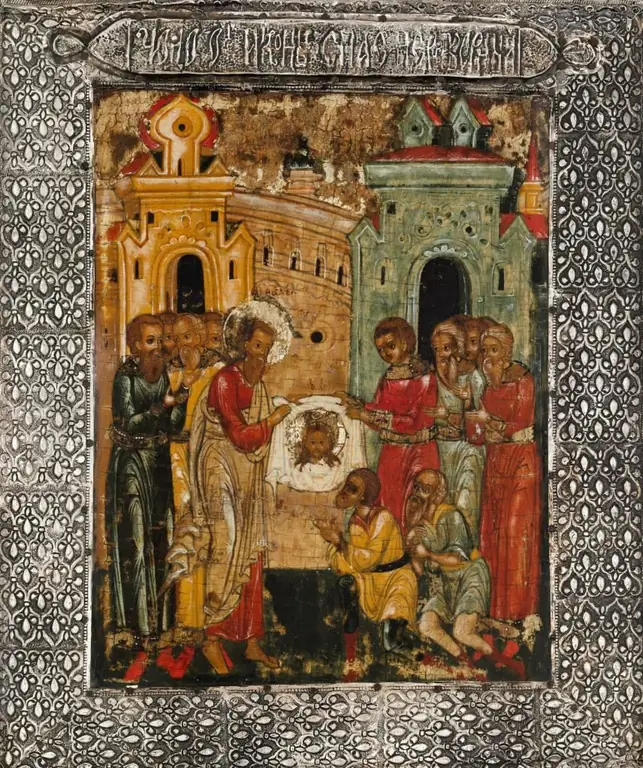
Miraculous image
Without leaving his people, the Lord nevertheless decided to help Abgar and asked him to bring a clean towel. Then He washed His face with water, dried it with a towel, and gave it to Ananias. The servant immediately noticed that the miraculous face of the Savior was displayed on the towel,who later healed the exhausted king of Edessa.
Another ancient Christian relic is also known - the Shroud of Turin, in which Joseph of Arimathea wrapped the body of the Savior. On the shroud, you can see the prints of a person in full growth. Believing Christians are convinced that this is a genuine image of the face and body of Christ.
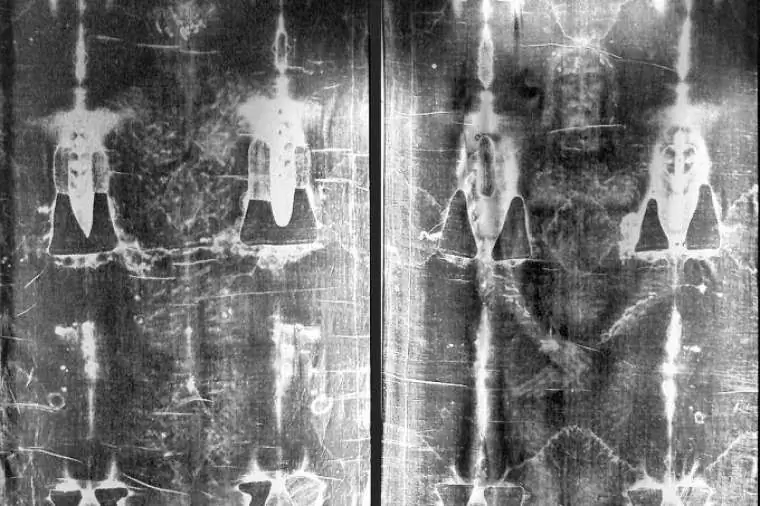
History of icon painting in Russia
Although Christian churches existed in Kyiv before, it was after the baptism of Russia that the construction of the first stone church began, which was called the tithe. All works were carried out by invited Byzantine masters. But then Batu Khan destroyed it.
Archaeological finds claim that some of her paintings were made in the mosaic technique, the rest - in the form of frescoes.
From historical sources it is known that Prince Vladimir brought the first icons, along with other shrines, to the capital from Chersonese.
Icons of the pre-Mongolian period have not been preserved. The most famous ensemble of that period today is the mosaics and frescoes of St. Sophia Cathedral, built by Yaroslav the Wise in the 11th century in Kyiv. The whole altar is decorated with mosaics.
The image of Christ Pantokrator is well preserved in the zenith of the dome, and in the vault of the altar - Our Lady Oranta. The walls are painted with frescoes that exactly match the ascetic Byzantine style of the first half of the 11th century.

Development of icon painting in Russia
The erection of the Assumption Cathedral played a huge role in ancient icon paintingin the Kiev Caves Monastery, which was painted by Constantinople masters.
It was the Assumption Church that became a model for the construction of other churches in Russia. His beautiful fresco iconography began to be repeated in other temples. And the Greeks who painted this temple became monks and stayed in this monastery, where they opened the first icon-painting school, from which such famous icon painters as Saints Alipiy and Gregory came out.
Great icon painters
The brightest and best works of icon painting can be seen in the works of such great masters as Theophanes the Greek (period of life - approximately 1340-1410), Andrei Rublev (1370-1430) and Dionysius (1440-1503 gg.).
They followed the path of true knowledge of icon painting. They did a lot for the development of Russian culture. It is also fascinating that their fates crossed with the fates of such great contemporaries, glorified as saints, such as Sergei of Radonezh, Dmitry Donskoy, Metropolitan Alexy, Epiphanius the Wise.
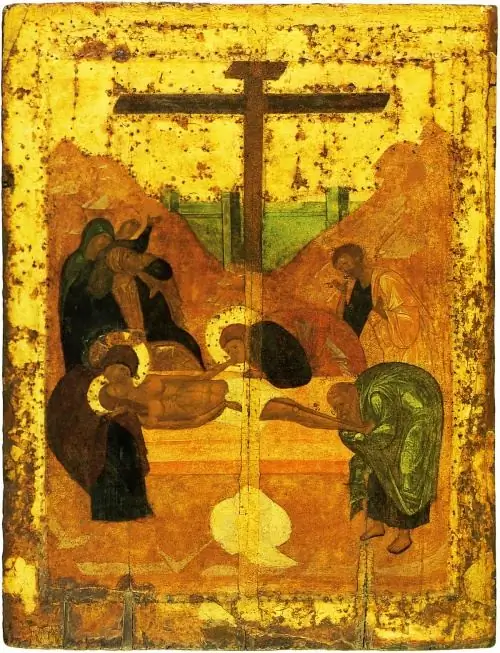
Theophanes the Greek
An old iconostasis of the Annunciation Cathedral of the Moscow Kremlin (1450) is attributed to the works of Andrei Rublev and Theophan the Greek.
A Greek who was inspired by the teachings of hesychasm (silence, peace, detachment) came to Russia from Byzantium in 1390. He believed that "the Kingdom of God is within man." This is what illuminates the believing person with heavenly grace, which was embodied by the icon painter in his expressive-spiritualistic style of painting.
Greek painted more than forty churches, one of which is Spaso-Preobrazhenskaya, preserved to this day in Veliky Novgorod (1378).
Deep Faith
There is practically no information about the life of the holy icon painter Andrei Rublev. It is only known that he was a monk of the Trinity-Sergius Lavra. There he painted the temple of the Holy Trinity.
In Rublev's painting, one can see a different understanding, where the encouraging faith of a person is the involvement of the earthly in the heavenly permission, sublime asceticism, which inspires the search for new beauty and expressiveness of the images of saints. This contemplative orientation will become characteristic of the Moscow school of icon painting. Further, all this intonation in the coloristic system will be acquired by the icon painter Dionysius.
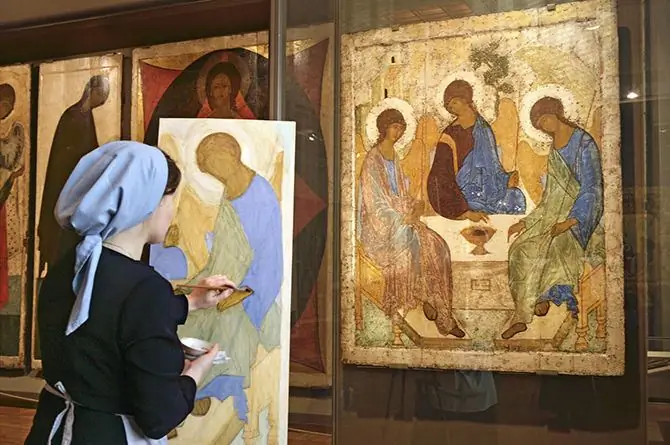
Andrey Rublev "Trinity"
The image of the Holy Trinity was written according to the Biblical story from the Old Testament, when Abraham met guests from three husbands at his home. Three angels were depicted sitting at a table on a vertical board.
They say that if Rublev created the image of the Trinity, then there is a God. Improvisation in his work is a risky business. He could be accused of heresy. But it turned out the opposite, and now the icon is a vivid example of a violation of church canons and a unique masterpiece of the 15th century, for which the author was canonized. This work is now kept in the Tretyakov Gallery.
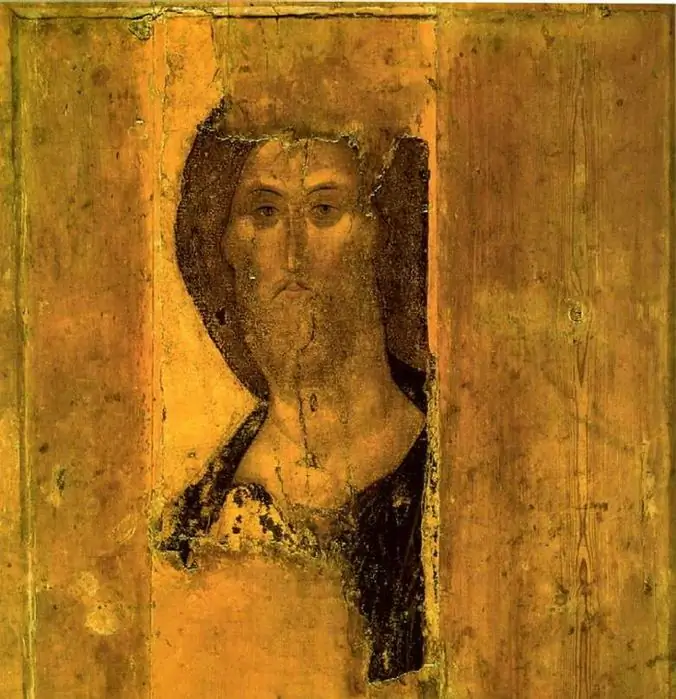
"Spas Almighty" (Pantocrator)
Rublevsky's "Savior of the Almighty", which is also kept in the Tretyakov Gallery of Moscow, should also be attributed to the first icons of Russia. SaviorThe Almighty can be depicted sitting on a throne, tall, chest-deep or waist-deep. The Almighty and Almighty holds the Gospel or a scroll in his left hand, the right hand is in a blessing gesture.
At Rublev's image is made on a lime board bust. With a gentle, wise and benevolent look, the Lord penetrates the soul of the beholder.
Unlike the formidable and even angry sublime icons of Jesus Christ that prevailed in the pre-Mongolian period, Rublev's Spas is portrayed as more humane. This is the ideal of a perfect man, philosophical wisdom, selfless love, kindness and justice.
Conclusion
All the icon painters mentioned above were able to accurately focus Russian icon painting during the spiritual rise of Russia. They left their indelible mark on religion and culture for future generations.






